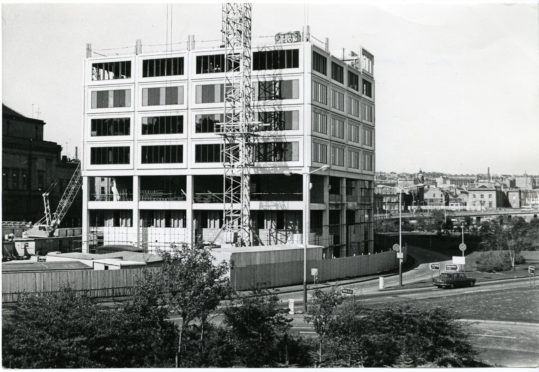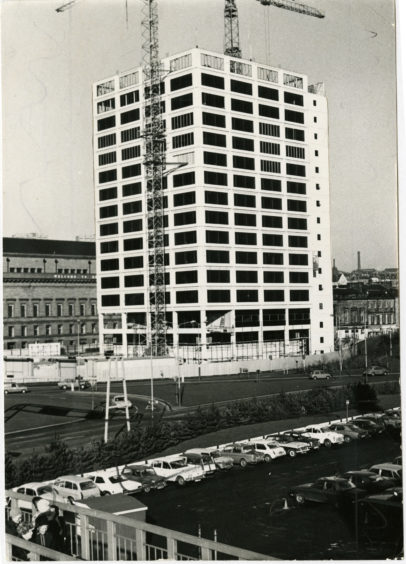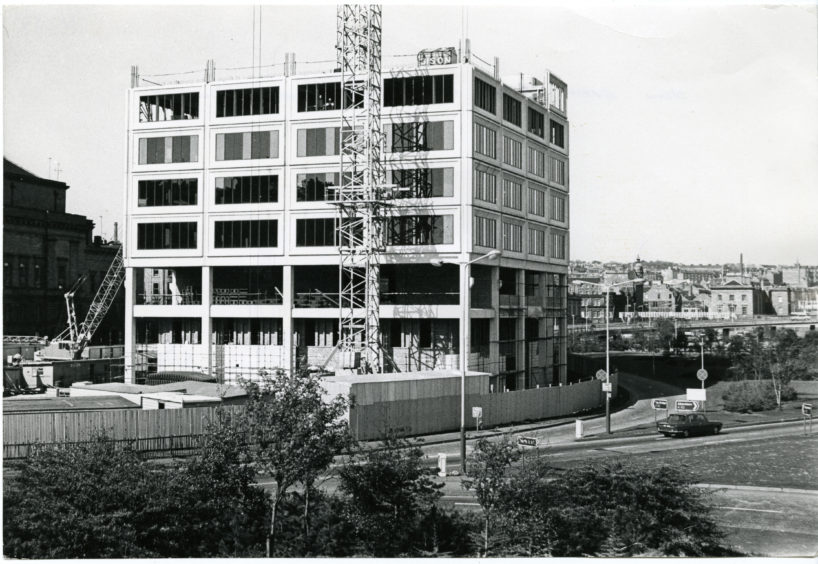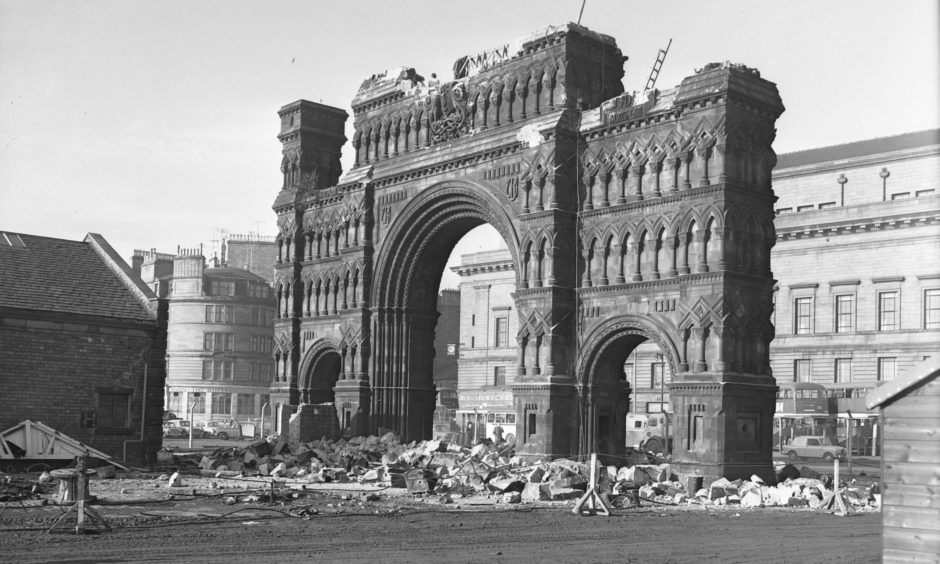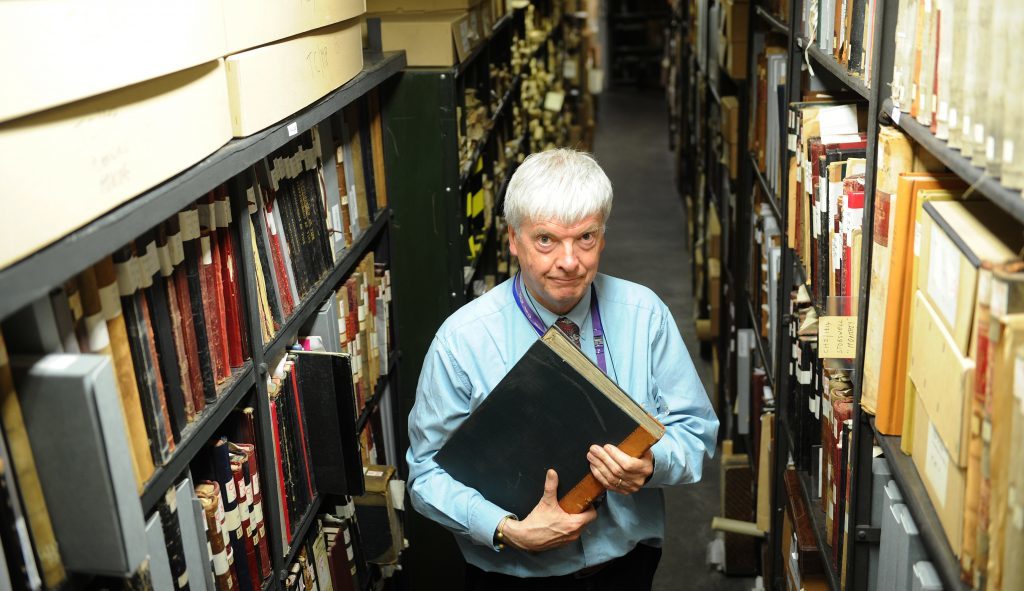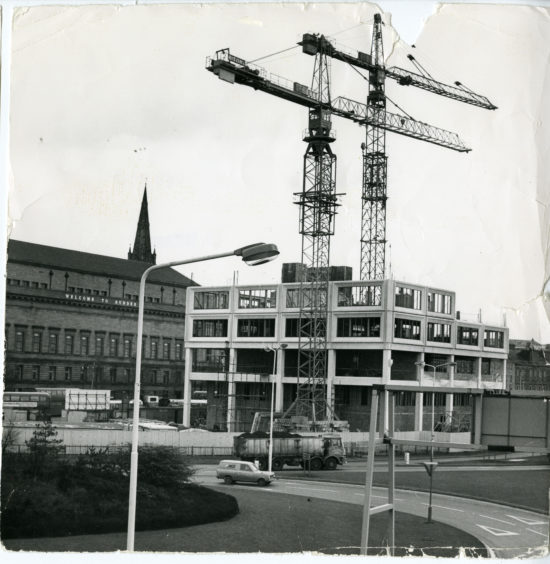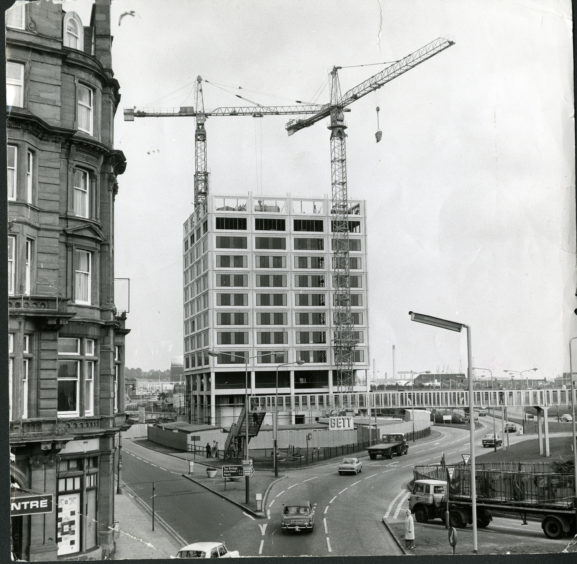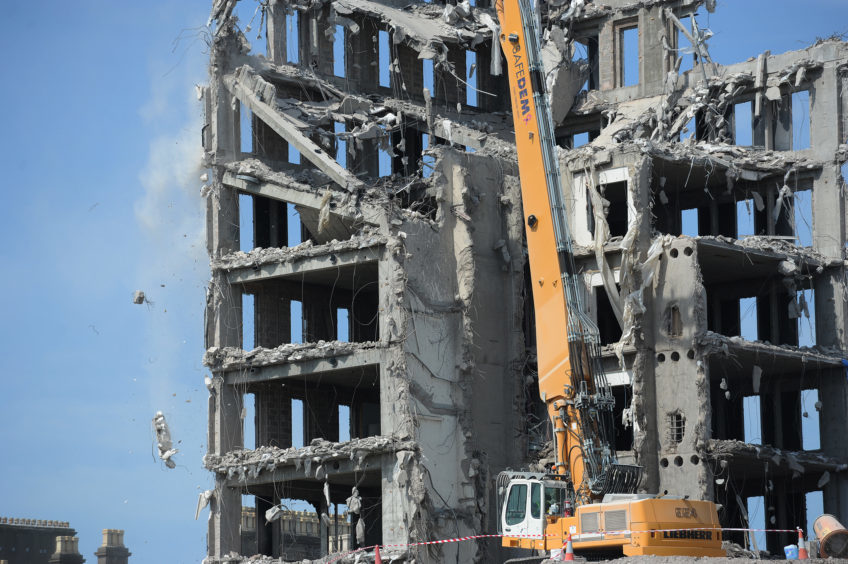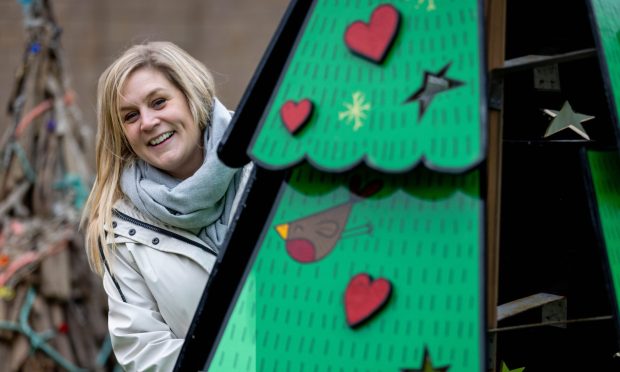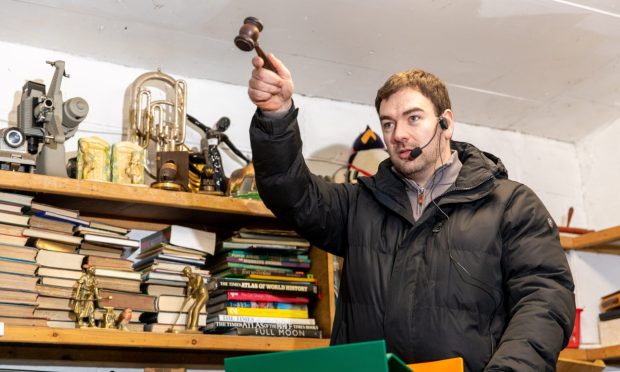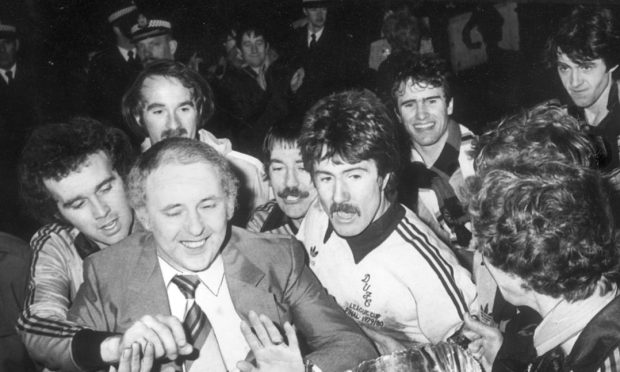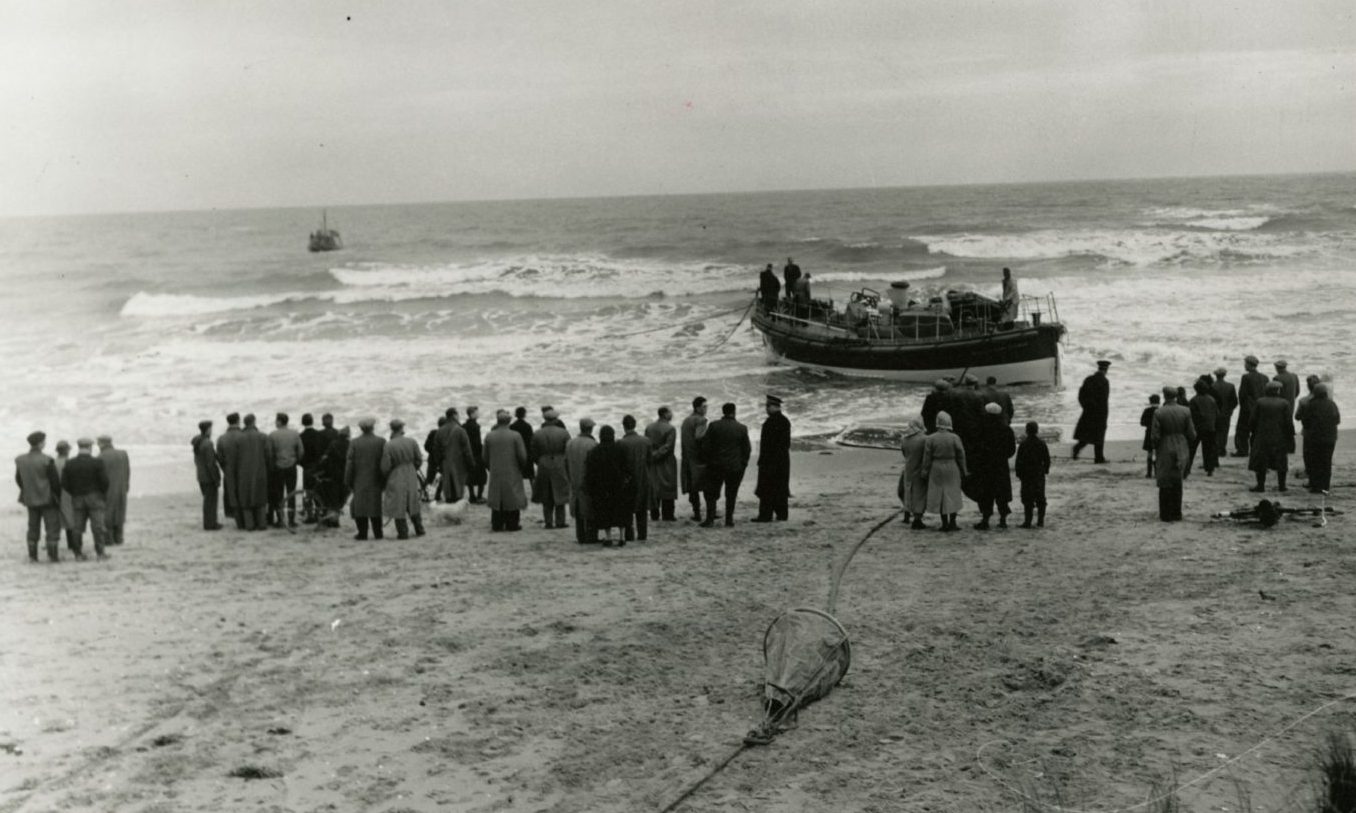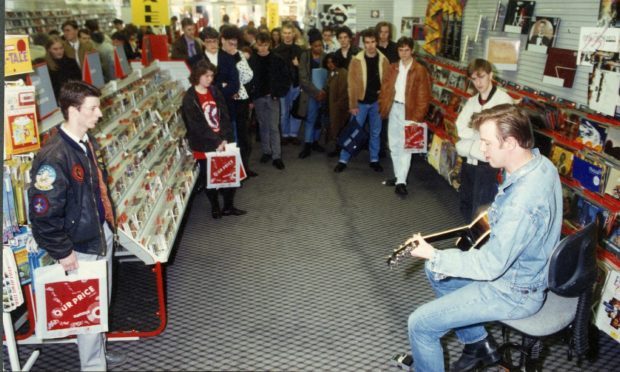It stood as a hideous scar on Dundee’s skyline for almost four decades.
Known locally as ‘Fawlty Towers’, the perennially unpopular Tayside House was completed 45 years ago in 1975 to become the home of Tayside Regional Council.
Wheatley Report
Village and city were being lumped together at the time following a blueprint for a united Tayside in what was the biggest administrative change that Scotland has ever known.
It took a long time to happen despite first being mooted a decade previously.
The Royal Commission on Local Government in Scotland, usually called the Wheatley Commission or the Wheatley Report, was eventually published in September 1969.
Its recommendations led to a new system of regional and district councils, which were finally introduced in 1975.
Tayside Regional Council would now have on its payroll over 18,000 staff, take charge of 300 schools, 700 vehicles, including 230 buses, with running costs around £68 million.
A pair of aces
Playing cards were used to decide the chairmanship of the new body at the inaugural meeting.
Independent Duncan Millar, supported by Labour councillors, drew against Conservative William Fitzgerald who was an ex-Lord Provost of Dundee.
They both drew aces on the first cut and had to draw again.
The second time Mr Millar drew another ace while Mr Fitzgerald drew a nine.
The other occasion on which playing cards were used to decide a local political leader took place in 1967.
The men involved in the playing cards cut to become Lord Provost were Alexander Mackenzie and Maurice McManus.
Mr Mackenzie won by drawing a seven of hearts, while Mr McManus drew a five of spades.
Mr McManus had already been Lord Provost for seven years and Mr Mackenzie’s victory gave the Progressive group control of the council.
The first meeting didn’t take place at Tayside House which would become the headquarters for Tayside Regional Council following the signing of an expensive agreement to lease the building for 63 years.
Bett Brothers started construction work in 1972 on the ‘landfall office block’ which was designed by Dundee architects James Parr & Partners for property developers Ravenstone Securities and Guardian Royal Exchange.
Work started following the 1960s wrecking spree of the city’s architectural heritage to allow the development of the Tay Road Bridge landfall area and inner ring road along Yeaman Shore.
Royal Arch
The Royal Arch was unceremoniously bulldozed into the docks in 1964 which was followed by the East Station and the Empress Ballroom falling victim to the wrecking ball.
It was positioned right in the eye line of the traffic coming across the Tay Road Bridge, was completed in 1975, and became occupied first in April 1976.
The podium block was not ready for the councillors until 1977 and the councillors had to meet in the corridors.
Iain Flett from Friends of Dundee City Archives said if Tayside House had not been built that Dundee would have been “financially and politically a poorer place”.
Tayside House was a ‘lifesaver’
He described Tayside House as a “lifesaver” because it was “built with private investment at a time when the bizarre untried experiment of regionalisation in 1975 hit Scotland”.
He said: “Hundreds of years of tradition of burghs and counties were swept aside for all-purpose regional councils with the four great counties of cities of Edinburgh, Glasgow, Dundee and Aberdeen as mere district councils left with the comparative minnows of libraries, museums, recreation, parks, registration, licensing, planning and social housing.
“While neighbouring Fife was left as a recognisable continuation of the old former county after a vigorous scrap to keep it whole as the Kingdom of Fife, the boundaries of Dundee, Perthshire and Kinross-shire and Angus were amalgamated into Tayside Regional Council with the two former counties and the city of Dundee relegated to district councils.
”When Tayside Regional Council was first elected it had a political Conservative majority when Dundee District Council had a Labour majority.
“Accordingly it was not a foregone conclusion that the regional HQ would be in Dundee – the geographical centre of the 1975 Tayside was nearer to Perth than to Dundee and it was a distinct possibility that its HQ might have been placed nearer Perth.”
He said the fact that a commercial multi-storey office block, developed by Ravenstone Securities, was available for rent in 1975 in the centre of Dundee near to transport links, was a “no-brainer” for the incoming council.
Image of modernisation
Built for commercial use, Tayside House did not have the meeting rooms and services that would be needed by elected members, but that would be quickly solved by adding on the podium block at the bottom of Crichton Street which would hold council meetings.
Mr Flett said: “Although a tired building by the time of its demolition, it was an image of modernisation when it was built.
“Its computer suite of IBM reel to reel computer cabinets with punched cards was industry standard at the time and had many visitors from business and government to see how the suite functioned.
“In the days of hard copy a vast electrified file rotating file storage machine could call up a particular file in minutes.
“In short – if Tayside House had not been built and Tayside Regional Council had gone elsewhere for its HQ, Dundee would have been financially a poorer place.”
Tayside Regional Council eventually purchased the building from Ravenstone Securities and Guardian Royal Exchange for £8.6 million in 1984.
In 1996, a further major reorganisation swept away Scotland’s regions and districts and replaced them with 32 councils.
When the regional council was abolished, Tayside House became a pooled asset of the three successor authorities for Dundee, Angus and Perth and Kinross.
A deal was reached whereby Dundee City Council bought out the other two councils’ interests in the building.
Public vote
As part of the city council’s millennium environmental project Changing Nature, the public were given the opportunity to nominate their choices of the best and worst buildings in Dundee.
Tayside House was voted the most monstrous carbuncle in Dundee.
The region’s administrative hub was a pile of rubble by 2013 as the city brought forward its ambitious £1 billion re-imagining of the central waterfront.
Safedem set a Leibherr machine with a reach of 34 metres to work and its demolition of the landmark captivated commuters.
The office block could not be blown down because of the close proximity of the east-coast railway tunnel, so a less explosive method of removal had to be used.
The upper floors were dismantled by robot-controlled vehicles that bit off chunks of concrete and dropped them down the lift shafts.
The high-reach machine then took over — its extended neck reaching out for its mouth to first prod holes in the slabs before wrapping its jaws round them and biting them off.
A giant fan and hoses were set up to suppress clouds of dust from drifting on to South Marketgait and up towards the city centre.
The rubble was used for landfill in the waterfront redevelopment.
Dramatic changes through time
Dundee waterfront’s dramatic £1 billion redevelopment was not the first revolution the riverside has seen.
From the 11th century Dundee was a prime location for shipping routes as it was two days closer sailing to the Baltic and northern Europe than Edinburgh.
A pavement slab with an anchor design outside Henry’s coffee house in City Square reminds us that underneath lay the original church dedicated to St Clement, the Vikings’ patron saint, showing the spot where their first landfall would have been.
Dundee Castle
The original harbour was at the Gellatly Street and Seagate junction.
Seagate in Scots was originally Seagait – ‘sea road’ – and marked the shoreline then.
Dundee Castle stood under St Paul’s Episcopal Cathedral and was supplied from a jetty under Exchange Street.
Boats and ships regularly pulled in there to deliver wine and arrows from the King.
The castle remained there until Wallace and Bruce demolished it at the beginning of the 14th century.
Dundee port moved steadily westwards and by the 16th century was where High Street is now at Whitehall Crescent.
Massive development of the harbour during the 17th and 18th centuries was boosted by the start of the textile boom in the 1830s and the city rapidly expanded.
When the linen merchants fell out with the town council in the first part of the 19th century the major improvements began.
The King William IV Dock was built to the south of where the Caird Hall now stands and over the next 100 years the Earl Grey, Victoria and Camperdown Docks were added.
Newspapers reported the opening of the new docks as “among the greatest events of the history of Dundee”.
Arrival of rail
But just a few short years later the railway arrived with two separate lines which ran to Dundee with one going to Perth and the other to Arbroath.
The railway was the biggest influence on the waterfront to date and the huge undertaking of creating an embankment landfill for the descent from the Tay Rail Bridge dominated the mid-19th century.
It was the biggest landfill Riverside had ever seen.
Dead horses were thrown in as well as house rubble, and it was all built with pure muscle power.
It was hazardous work and in August 1873 the worst accident in the bridge’s construction happened when five workmen drowned and a sixth was killed after an engine boiler fell on him.
Before that bridge collapsed in 1879 and the second rail bridge was built, waterfront developments in the 19th century included the stone Royal Arch, built to replace the original wooden one at Dock Street when Queen Victoria visited the Royal Burgh.
